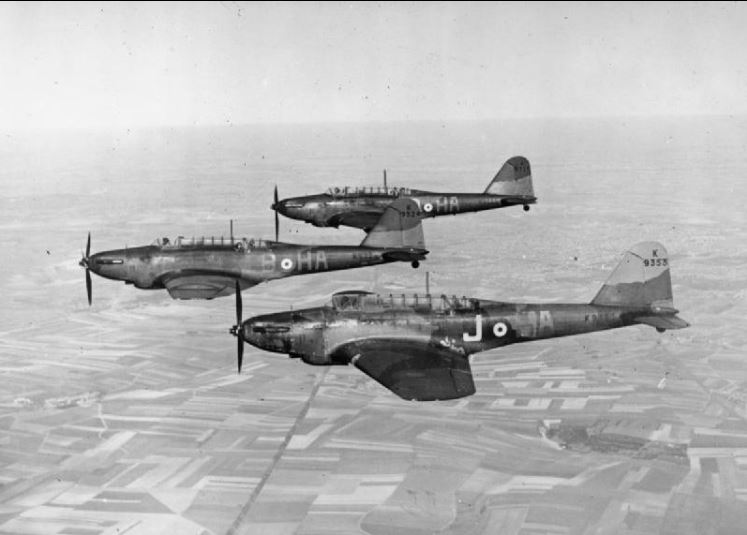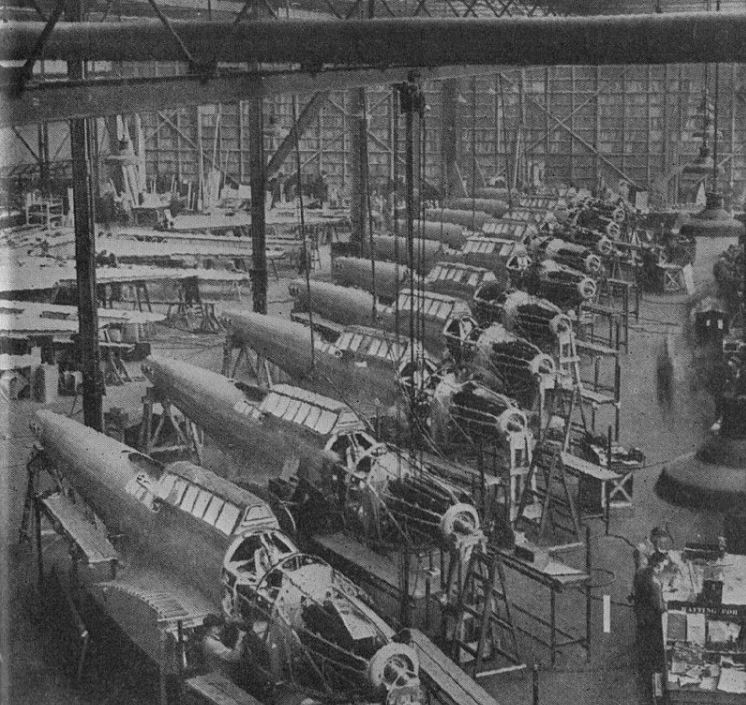Fairey Battle
From Our Contribution
Contents
Remarks
Designed with France as likely enemy in mind, and to avoid possible banning of heavy bombers at the 1932 Geneva Conference. In March 1936 the first prototype had its maiden flight, followed by service trials. Despite it already thought to have too small a range and to little a bomb load, it went into production in late 1936 with an initial order for 155 aircraft, with the first completed flying in June 1937.
The Battle was a robust aircraft, relatively easy to fly, with good external visibility so when it became obsolete as a front line aircraft (late 1937) it was suitable for training purposes and as a target tug. However, many of them remained operational during the war lacking suitable replacements. Twenty six RAF Squadrons were at one time or another operating the aircraft until very heavy losses on sorties during May 1940 saw the Battles withdrawn from the front lines. Between may and Jun 19440 more than 200 Fairey Battles were lost in action. Their last ombat battles occurred during the german invasion of Greece
While found to be inadequate as a bomber aircraft in the Second World War, the Fairey Battle found a new niche in its later service life. As the Fairey Battle T, for which it was furnished with a dual-cockpit arrangement in place of the standard long canopy, the type served as a trainer aircraft. The Battle T was equipped with dual-controls in the cockpit. The Battle served as a trainer with the RAAF, which allocated it the prefix A22. On 30 Apr 1940, the first four RAAF Battles were delivered to No. 1 Aircraft Depot and on 29 Jun 1940, the first assembled aircraft, conducted its first flight. Deliveries occurred at a steady pace until the last Battle was received on 7 Dec 1943. These aircraft were a mix of bomber, target tug, and dual-control trainer variants; they were mainly used by Bombing and Gunnery schools until 1945; the last aircraft were phased out in 1949.
General characteristics
- Crew: Three - Pilot, Observer/Navigator, Radio operator/gunner
- Length: 12.91 m m
- Wingspan: 16.46 m
- Height: 4.72m
- Empty weight: 3,015 kg
- Max takeoff weight: 4,895 kg
- Powerplant: 1 x Rolls Royce Merlin II V12 engine
- Maximum speed: 413 km/h at 4,600 m
- Range: 1610 km
- Service ceiling: 7,620 m
- Armament
- Guns: 1 x .303 Browning machine gun in starboard wing; 1 x .303 Vickers machine gun in rear cabin
- Bombs: 4 x 110 kg internally or 680 kg externally
Aircrew Trainees
No. 1 Bombing and Gunnery School RAAF
- Gerard Henzell Straughan Hemy - April - May 1941
No. 2 Bombing & Gunnery School RAAF
- Robert (Mick) Bunney 14 - 25 Jul 1941
- Cyril Charles Cross 30 Apr - 12 Oct 1942
Ground Crew
No. 1 Aircraft Depot RAAF, Sale, Victoria
- Vernon Wallace Marsh early 1944
No. 7 Communication Unit RAAF
- Stanley Gordon Devereux 18 Dec 1943 - 17 Mar 1946

